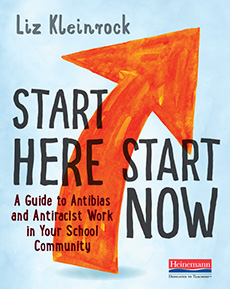
The goal of this book is to be transparent about the challenges that educators committed to antibias and antiracism face every day, and to provide concrete strategies to overcome some of the barriers that prevent us from engaging in this work.
As intimidating as this work may seem to those just getting started the consequence of not talking about ABAR, equity, and inclusion in schools is far more severe. No one is born knowing how to be an active and engaged citizen. This is something we have to learn, and this is where schools and educators have a responsibility to ensure that students understand how our society operates, and how to communicate with people across the political and cultural spectrum. At the end of the day, we cannot fix problems we do not talk about, or that we cannot name. We can’t hope to eradicate systemic racism if we don’t understand race. We can’t bridge political polarization if we don’t teach our children to seek to understand, rather than argue to win. Our personal discomfort as educators cannot become barriers that prevent us from creating brave spaces for our students.
The world we seek to build has never existed, but we must be courageous, remind ourselves that what is right is often not what is easy, and continue to dream. Amid the chaos, our path ahead is clear. This is our chance to dream big and build something better.
In this sample, you will find:
© 2024 Heinemann. A division of Houghton Mifflin Harcourt.
Permissions Request Disability Request
Website Terms of Use Privacy Policies